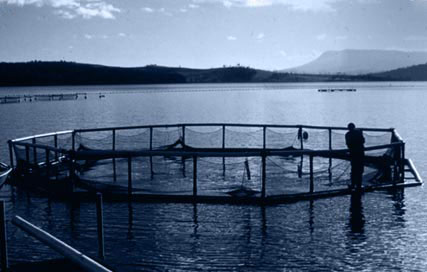Management Issues

Zooplankton are indicators of ecosystem health, biodiversity, climate change, fisheries productivity and nutrient inputs. Of particular interest in southern Australia, fish farms are a source of dissolved nitrogen and phosphorus from fish excretion and possibly from breakdown of uneaten feed, some downstream effects on phytoplankton and zooplankton are to be expected. There is a large literature on the effects of fish farms on bottom-living (benthic) animals but very little on how they affect zooplankton.
Whether hypernutrification becomes a serious problem at fish farms will depend to some extent on the effectiveness with which wastes are managed and the thoroughness and frequency with which the site is flushed by natural water circulation.
Early problems occurred at sites that were located in sheltered bays. Problems can be exacerbated by packing cages too close together because the cages themselves militate against water circulation. Problems that have been linked to excess nutrients are dense blooms of dinoflagellates that can release toxic metabolites or can cause irritation of fish gills, and plagues of jellyfish that clog nets and can cause injury or death of cultured fish through their stinging cells.

